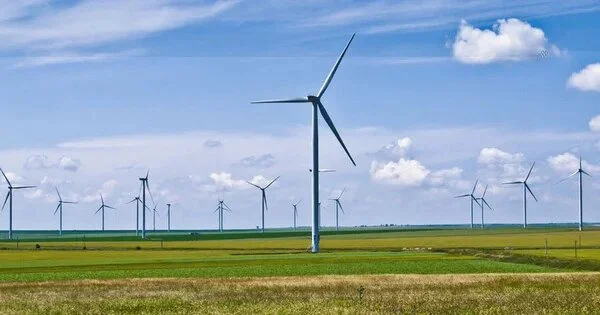Anticipating major elements of wind farms a decade or more before they are built can help shape today’s investment, research, and energy system planning decisions. Researchers Philipp Beiter and Eric Lantz of the National Renewable Energy Laboratory (NREL), along with collaborators from the Lawrence Berkeley National Laboratory and the United States Department of Energy, polled more than 140 of the world’s leading experts about their predictions for future wind plant design in 2035.
The researchers discover in their new article, “Expert Perspectives on the Wind Plant of the Future,” which appears in the journal Wind Energy, that experts expect the height of wind turbines to increase even more than previously predicted, with plants increasingly located in less favorable wind and siting regions.
Taller turbines, along with larger rotor diameters, allow for greater energy extraction. According to the most likely scenario, hub height for newly constructed onshore wind turbines would reach 130 meters in 2035, up from 115 meters estimated in a 2015 poll. (Because each survey asked experts to look 15 years ahead, the 2015 data provides forecasts for 2030.)
Our research provides a much-needed benchmark for characterizing future wind technology in power sector models. By discussing the economics underpinning wind energy design options, this work fills a key research vacuum.
Philipp Beiter
Fixed-bottom offshore wind plants are expected to have a capacity of 1,100 megawatts (MW) and floating offshore wind plants will have a capacity of 600 MW. These and many other design choices outlined in the article can achieve levelized cost of energy reductions of 27 percent (onshore) and 17 percent -35 percent (floating and fixed-bottom offshore) by 2035 when compared to today. New plant designs can also improve wind energy’s grid service, for example, through project hybridization with batteries and hydrogen production.
“Our research provides a much-needed benchmark for characterizing future wind technology in power sector models,” Beiter stated. “By discussing the economics underpinning wind energy design options, this work fills a key research vacuum.”

The authors cite economic drivers for these design modifications, including as economies of scale from larger turbines, larger plant size, and increased siting flexibility. In essence, these mechanisms drive design decisions because the benefits of lower costs or increased energy production outweigh the incremental cost of obtaining them.
“While well recognized in larger economic theory and frequently addressed separately, relatively few studies have systematically studied the exact dynamics driving wind plant design,” Lantz said of the study’s one-of-a-kind contribution.
The comprehensive global expert survey was made possible through an international research partnership under the auspices of the International Energy Agency Wind Technology Collaboration Programme, whose mission is to advance wind energy research, development, and deployment in its member countries.
This global expert study was made possible by an international collaboration of researchers under the auspices of the International Energy Agency Wind Technology Collaboration Programme. The goal of this initiative is to support wind energy research, development, and implementation in its member countries.
The research was financed by the Department of Energy’s Wind Energy Technologies Office. NREL is the major national laboratory of the United States Department of Energy for energy efficiency and renewable energy research and development. NREL is managed for the Energy Department by the Alliance for Sustainable Energy LLC.
















